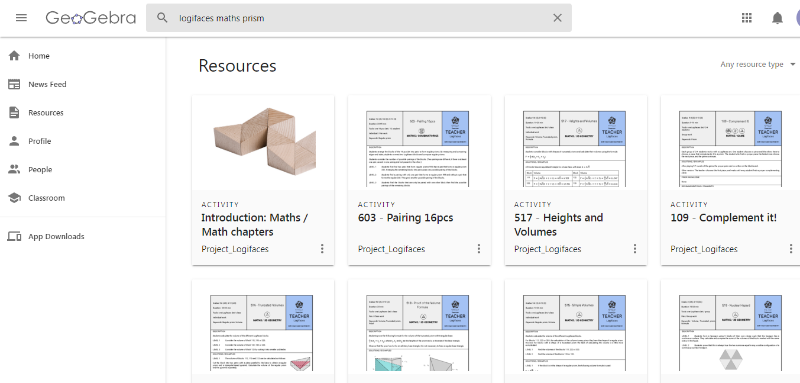How to find content
Search for resources using Keywords
All exercises and content can be found using the term Logifaces and a term or keyword you want to find.
An example could be Logifaces Grade 10 - that will give you suggestions for examples for Exercises for the 10th Grade.
Some keywords are Logifaces specific and in case you want to have such suggestions on top of your list, it is always good to add Logifaces itself, too.
You might also want to search for keywords indicating certain Geogebra amendments or recommendations from the authors.
- The keywords "logifaces homework" will give you hints which exercises you might use as exercises for after class.
- "logifaces video" will show you exercises with amended videos.
- "logifaces webpage" shows you exercises with links to pages with further information.
- "logifaces interactive visualisation" gives you a list of exercises with interactive visualisations, so called applets, that were also used as image source for the book. They can be moved and turned by mouse clicks.
- "logifaces quiz","questionnaire" or "assignment" will give you exercises with activities you can use for GeoGebra classroom activities.
- You can learn how to do that here in detail.
In this example, we search for maths exercises focusing on prisms

Tags
Some of the content can be searched by tags alone, too.
You can find tags created in GeoGebra for example at the top of every resource. Resources can be all pages of the Geogebra book and this includes all exercises.
Some of them are specific regarding mathematics and those are clickable. In case you do that, you find all resources GeoGebra-wide related to the tag.
Tags are used to improve visibility throughout GeoGebra in order to make people notice our content even though they are not aware of this book.
Look at this resource and look at the image below how it could look like.
Example for tags used within the Logifaces book and within GeoGebra

Tags and Keywords used in the book
Here are some tags and keywords you might search for throughout the book:
| General |
| ||||
Mathematics
Search for level of difficulty:
|
| ||||
| Interdisciplinary |
| ||||
| Science |
| ||||
| Arts |
|